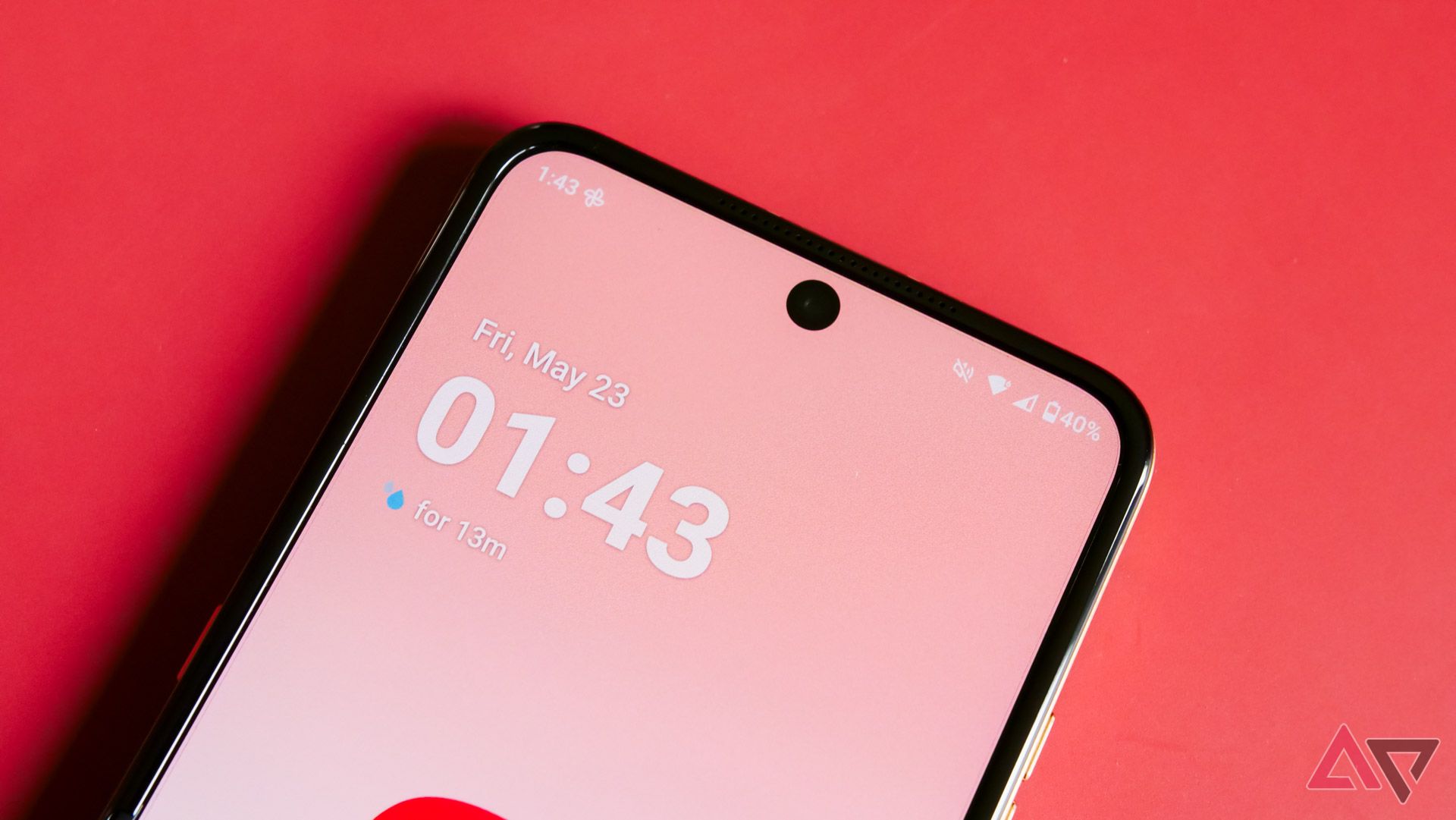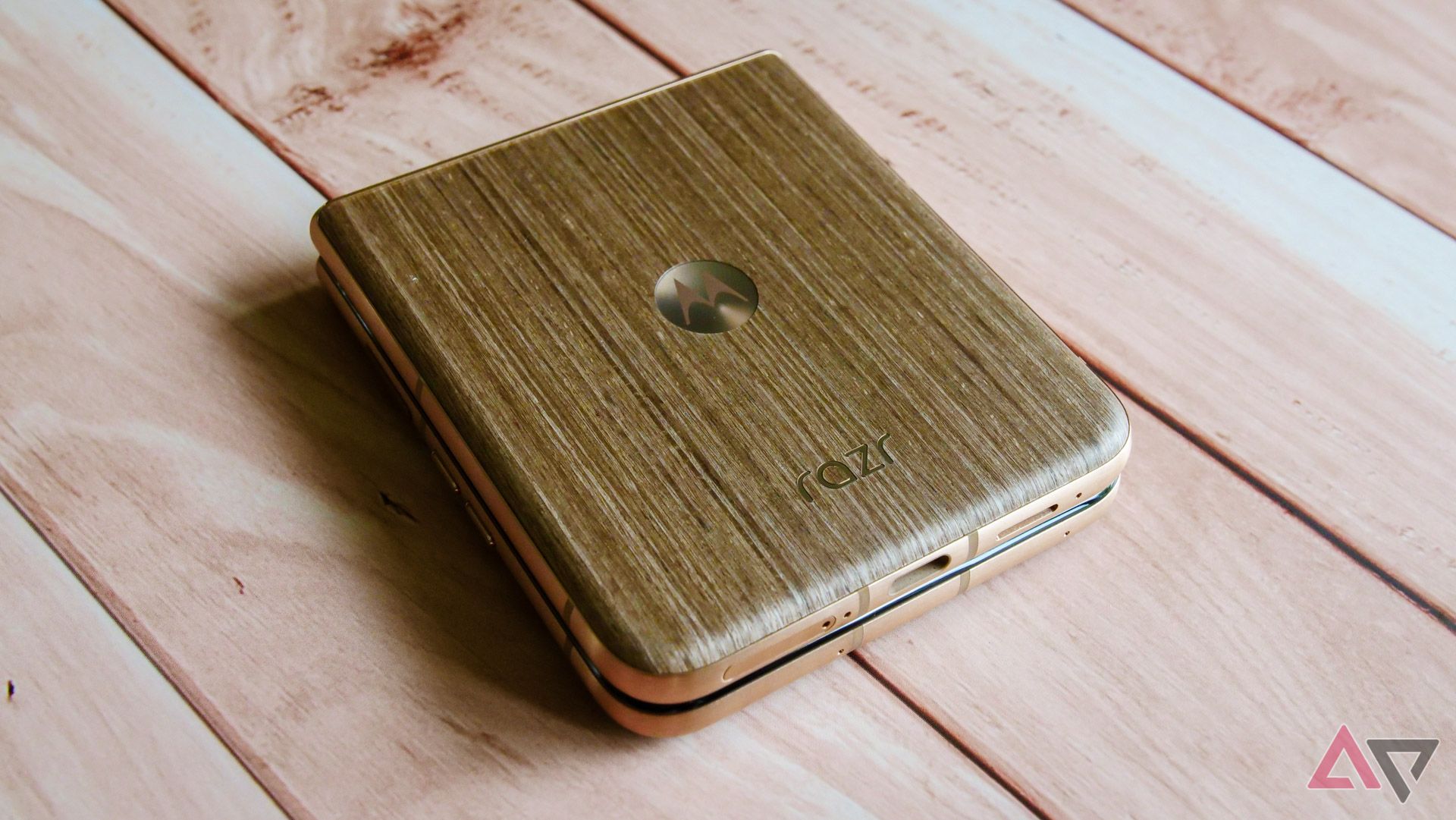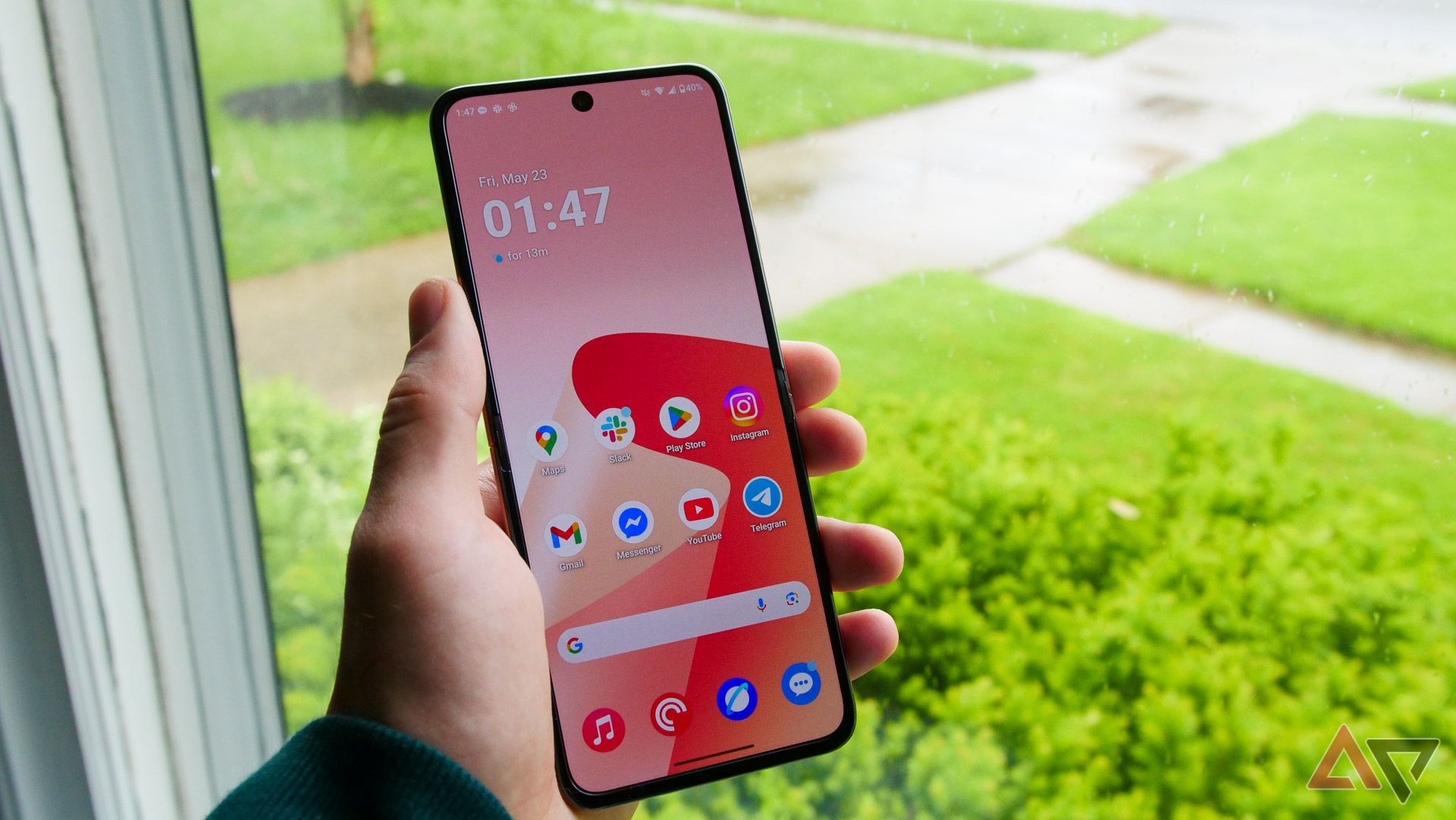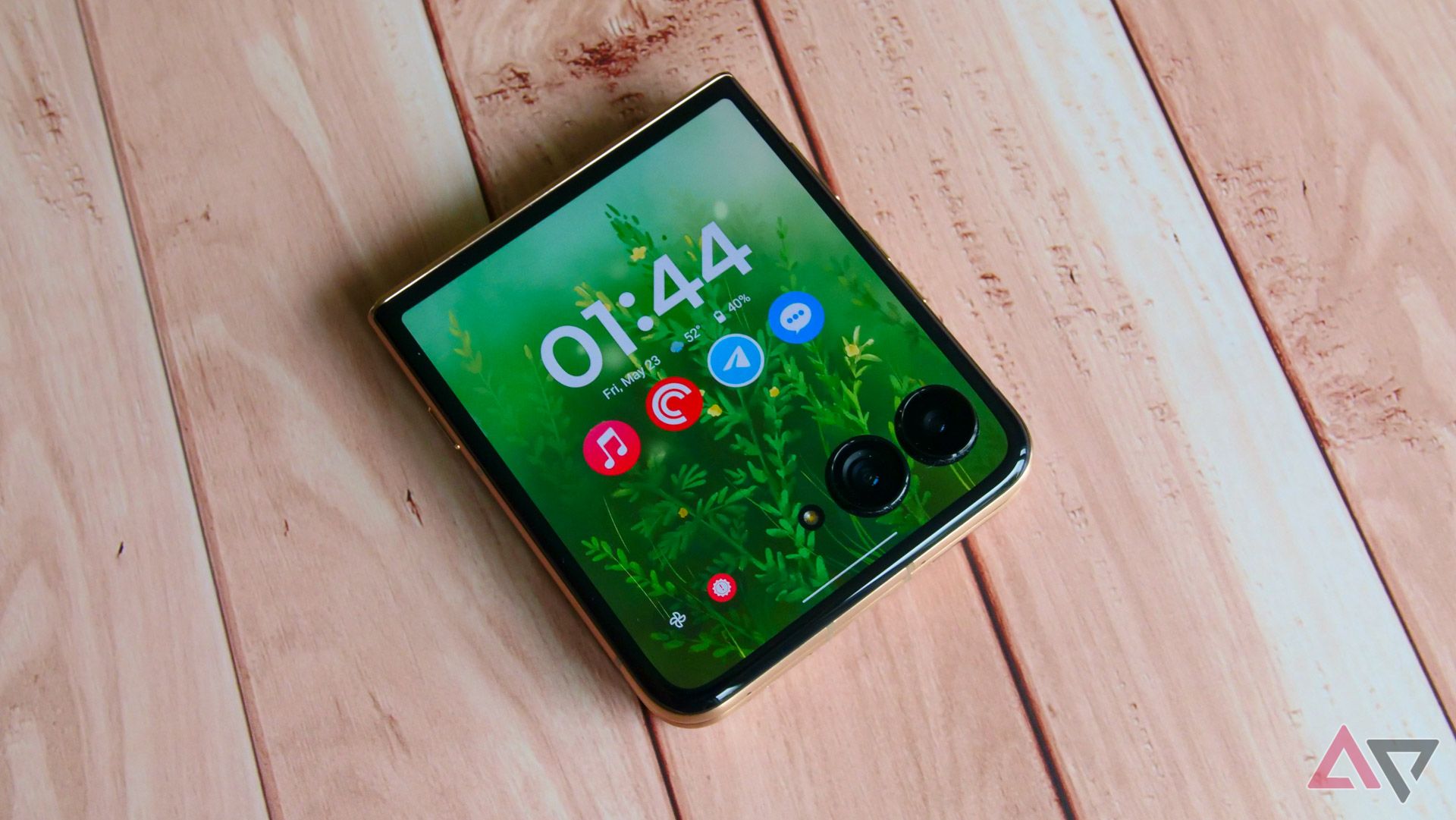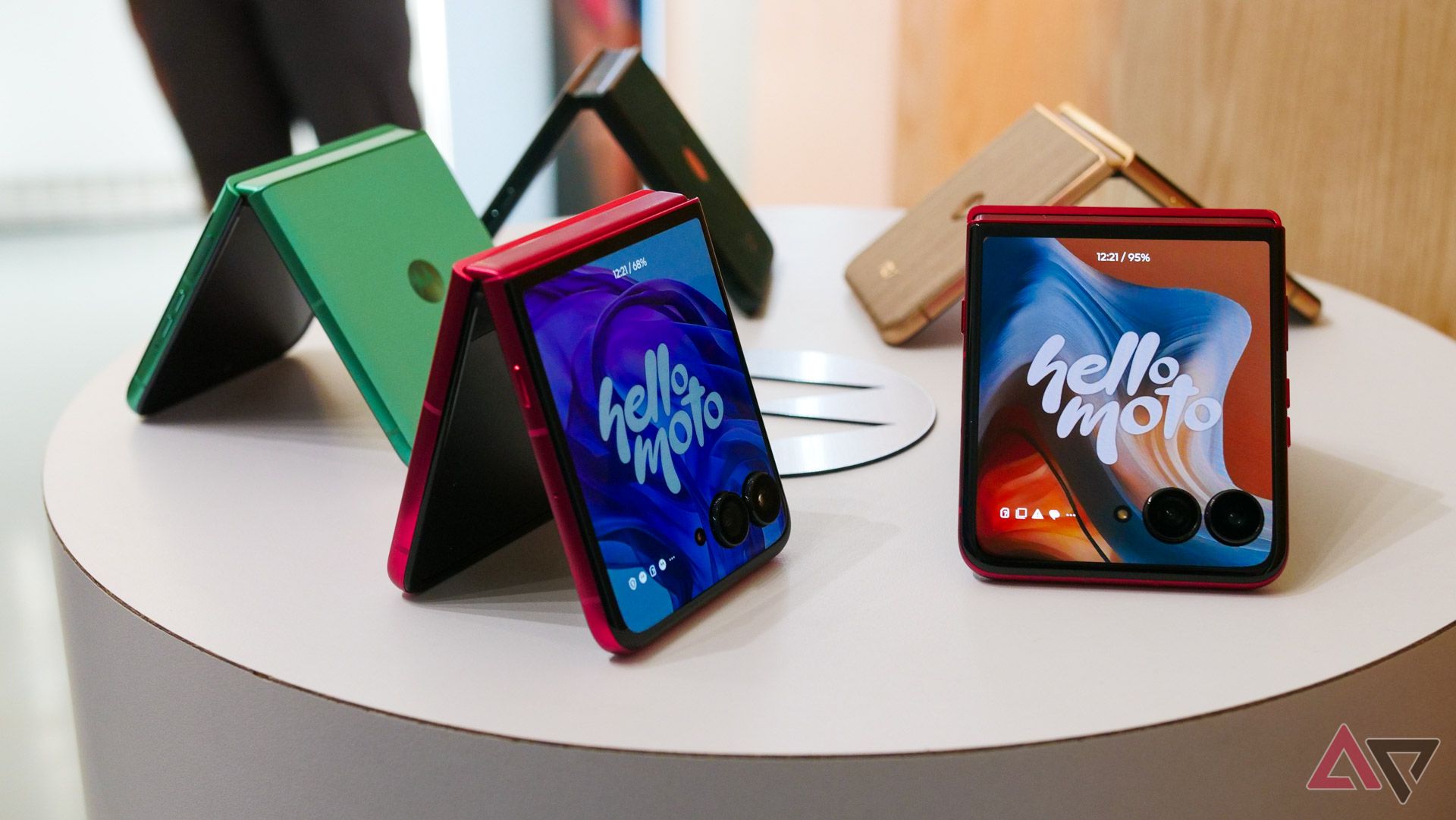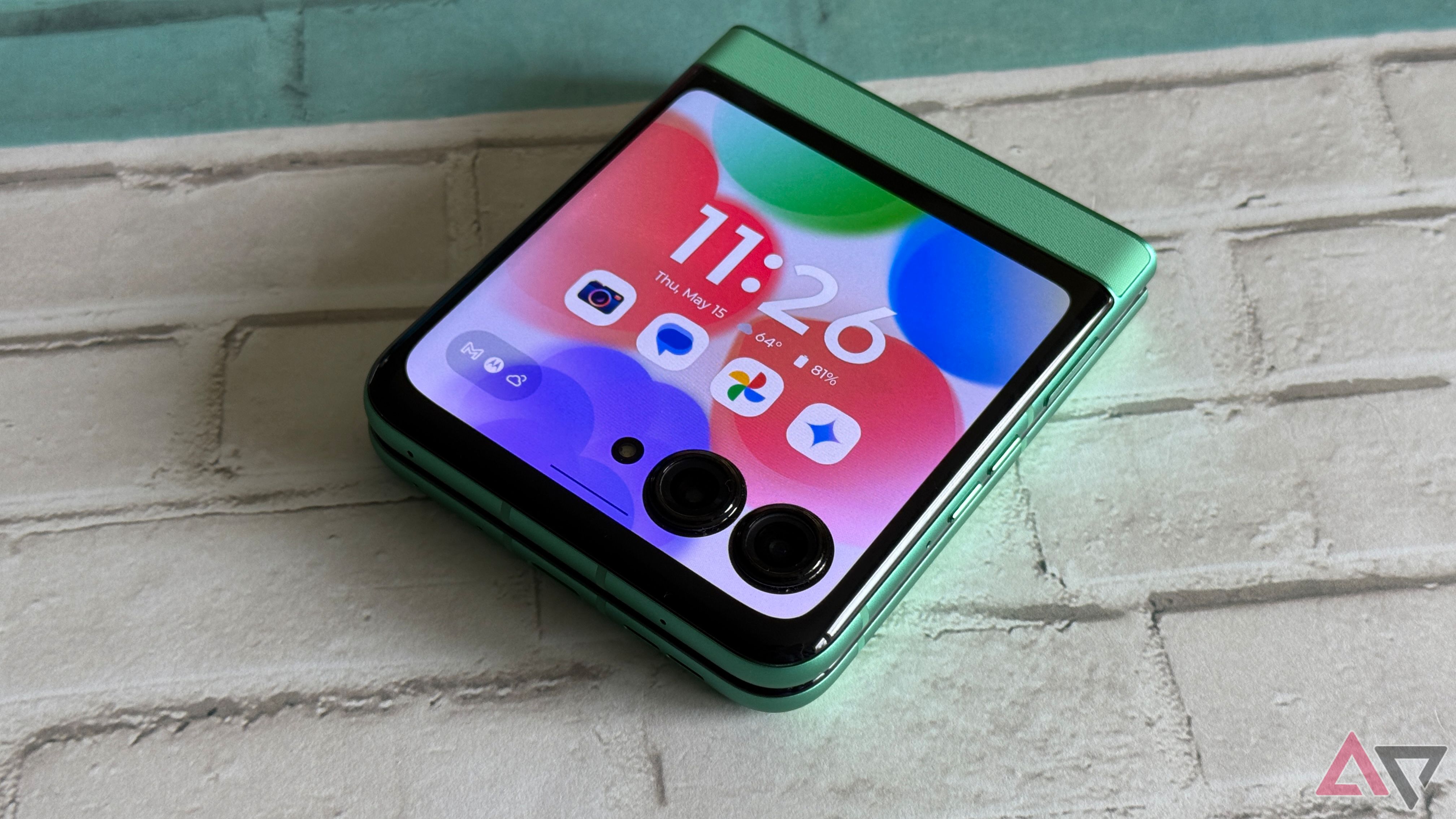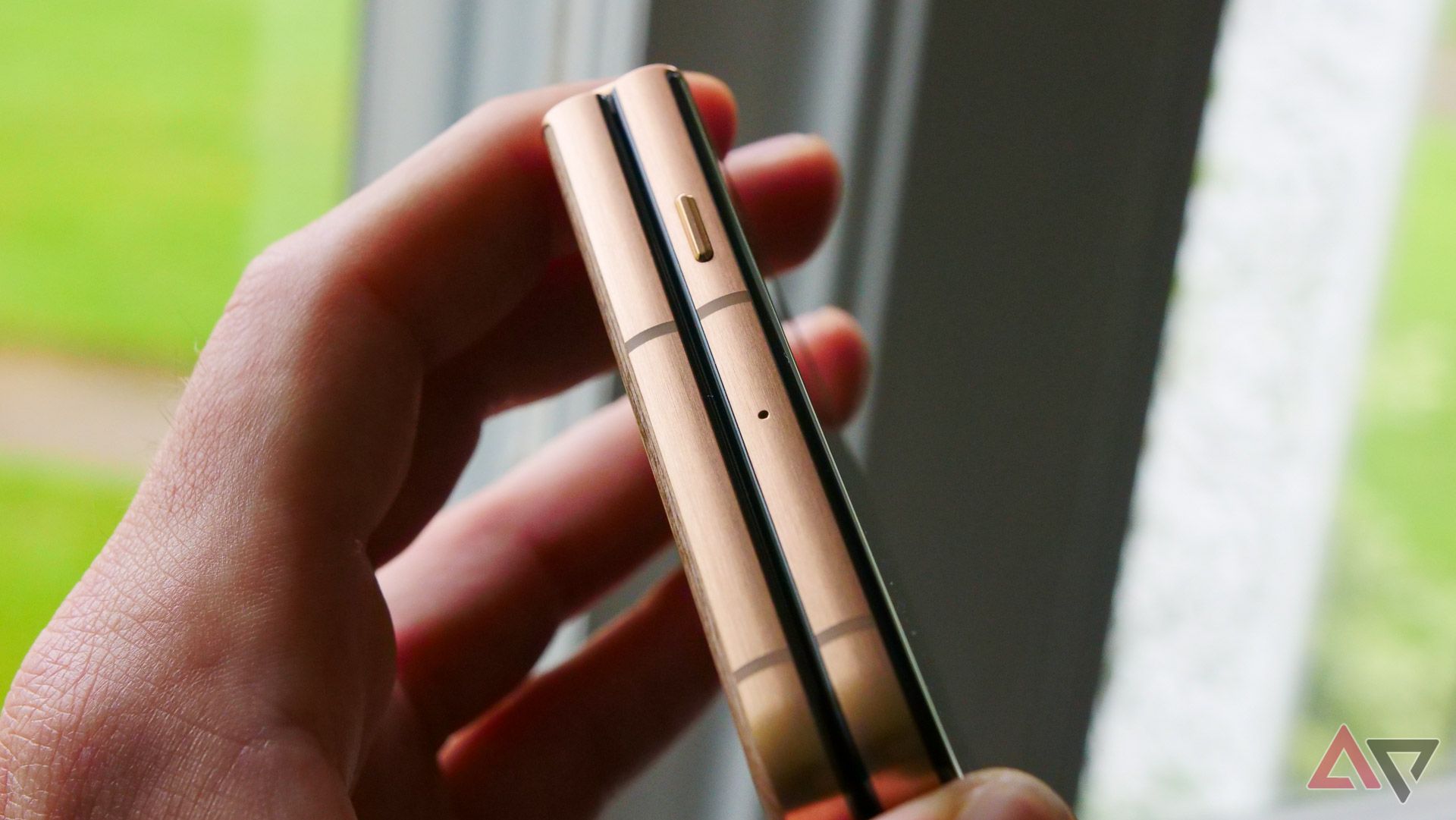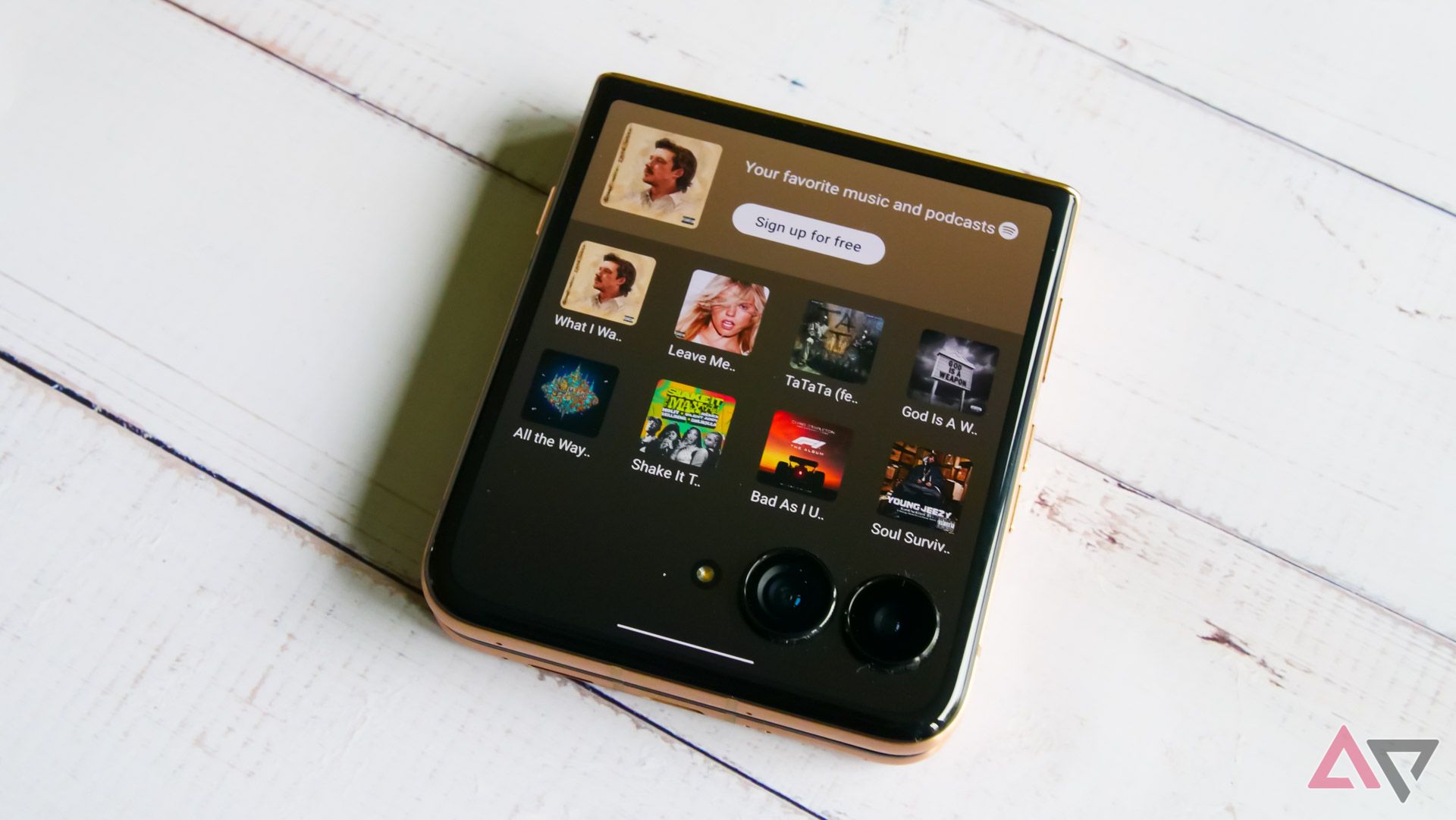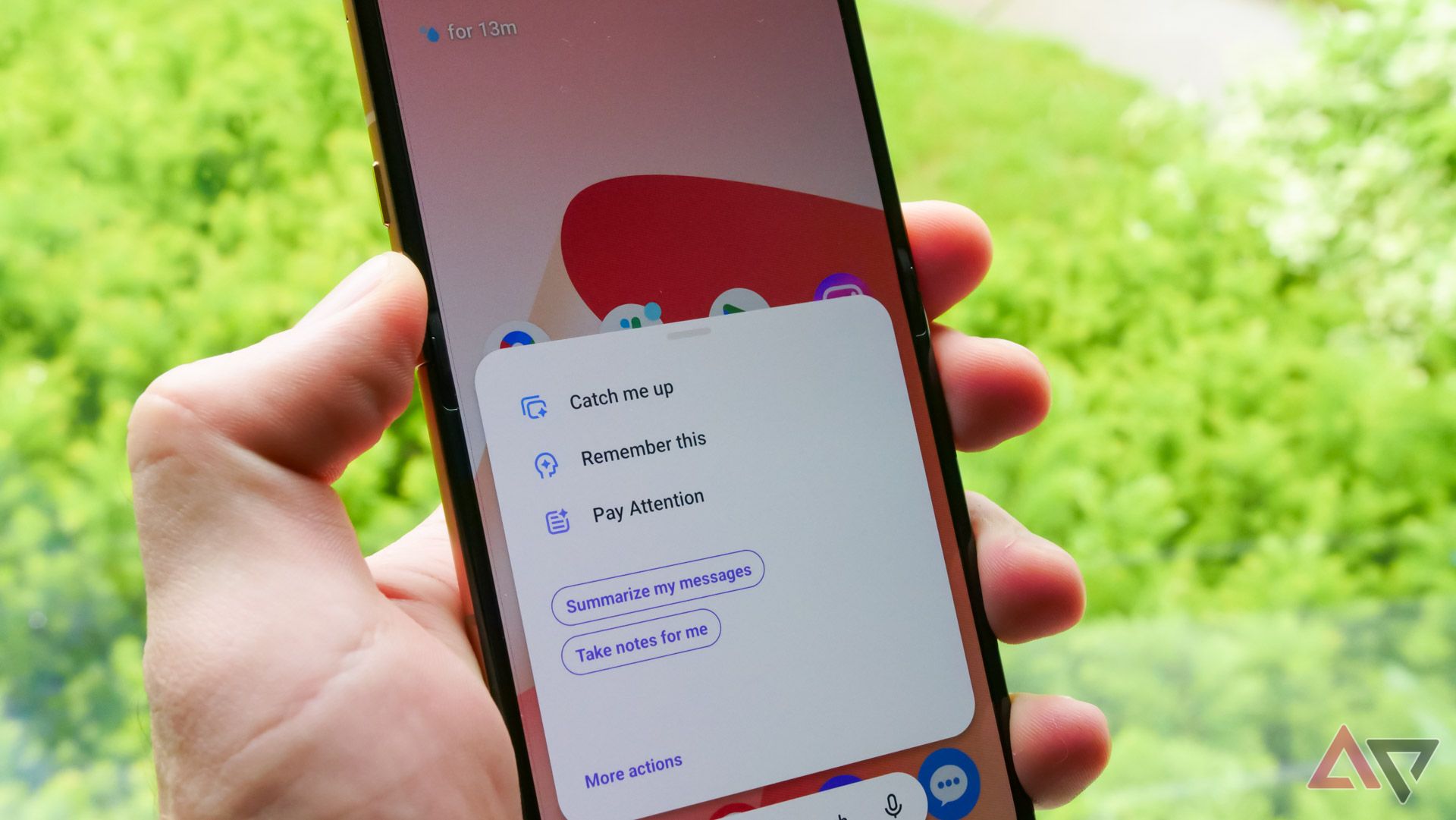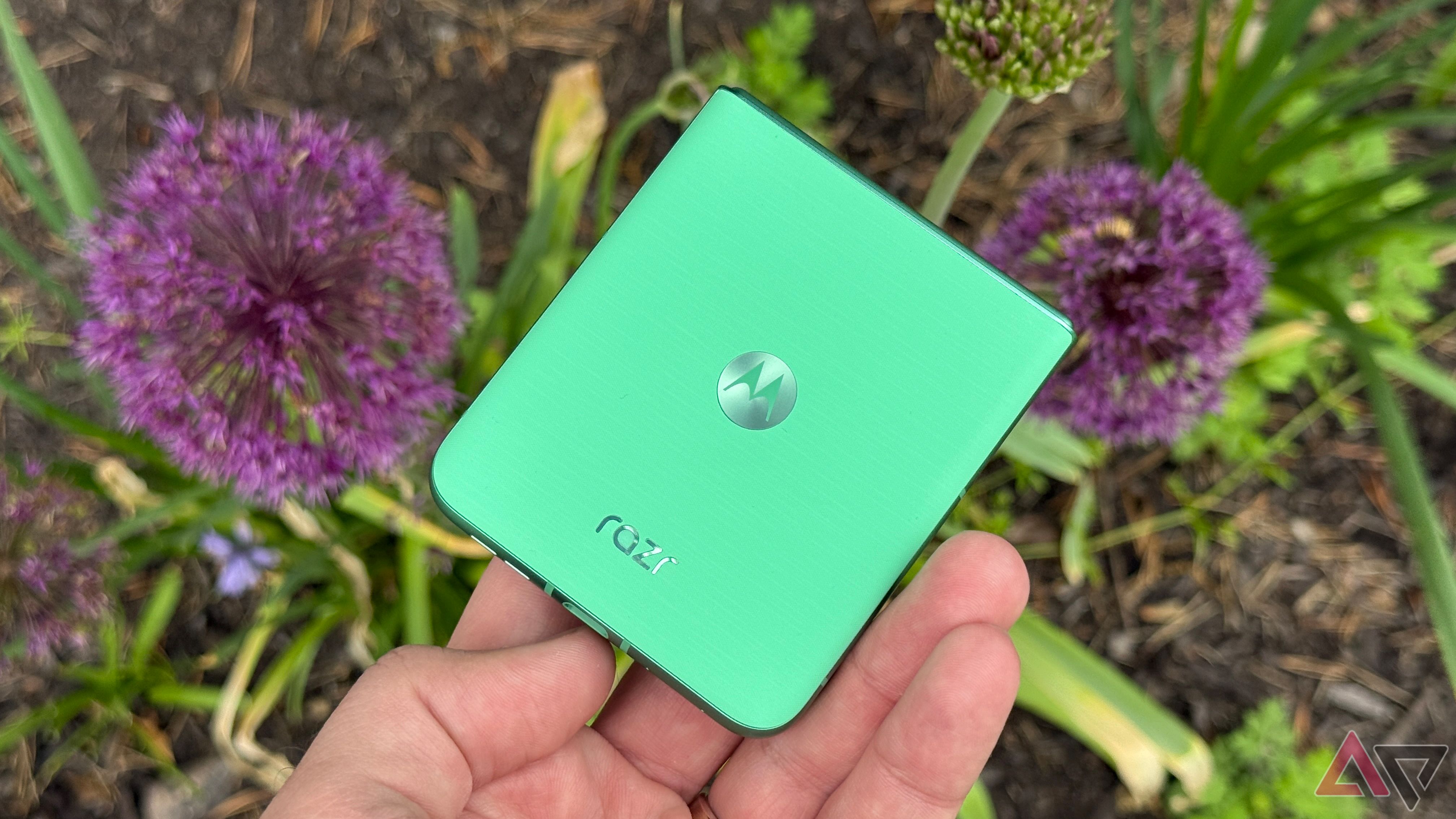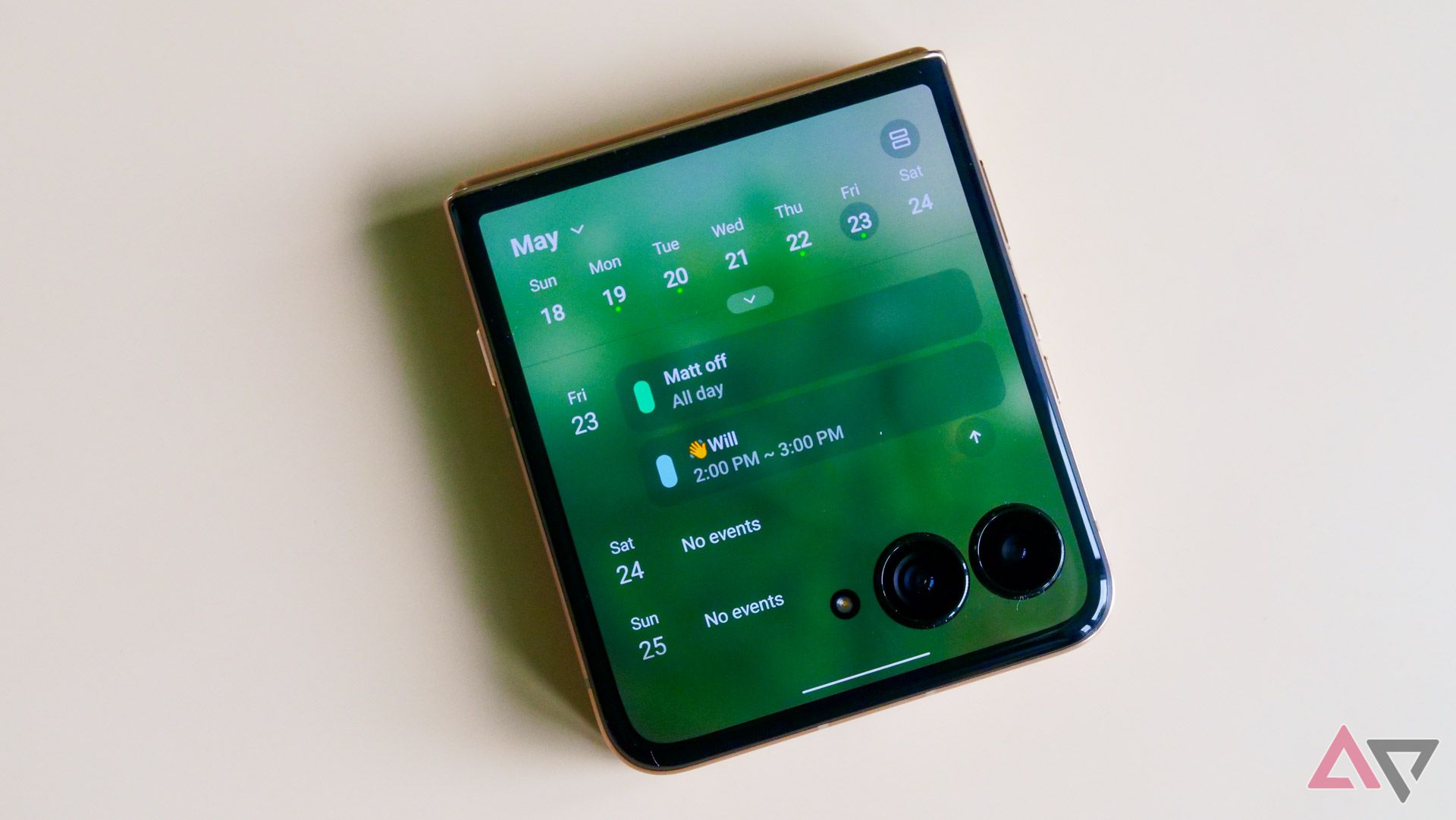It’s not hard for clamshells to win me over. While I occasionally struggle to see the point behind a big-screen foldable, the appeal of a more portable, pocketable smartphone — one equipped with a small display perfect for quick tasks — is far more obvious. And for the past two years, it’s been Motorola, not Samsung, that’s managed to crank out my favorite foldables of the year. In reviewing both 2023’s Razr+ and 2024’s regular $700 Razr, I found two smartphones that were easy to recommend, even with a handful of obvious shortcomings.
Unfortunately, I’m not sure Motorola’s managed to score a hat trick in 2025. As a new, more premium addition to the lineup, the Razr Ultra is finally the flagship foldable that fans have been holding out hope for for years. But a specs sheet this impressive doesn’t come cheap, and at $1,300 — and yes, I’m going to be bringing this number up a lot — I’m just not sure I see a smartphone that I could easily recommend to most buyers.
Moto Razr Ultra (2025)
The Razr Ultra (2025) finally delivers the flagship clamshell we’ve wanted from Moto, but with its new, more expensive price tag, it’s tricky to recommend with this company’s software reputation.
- Refined design with fun color options
- Flagship specs across the board for the first time
- Improved camera system
- Cover screen still feels pretty novel
- Poor software support from Motorola
- Battery life is fine, but could be better
- AI tricks are sort of nothing
- $1,300? In this economy?
Availability, network, and specs
This is one powerful, expensive smartphone
The new Moto Razr Ultra is available unlocked through Best Buy, Amazon, and Motorola’s own webstore. It’s also available through AT&T and T-Mobile, but the unlocked model works on practically any US carrier or MVNO. The 512GB model will run you $1,300, while the bump up to 1TB costs a whopping $1,500. It comes in four colors, all thanks to a partnership with Pantone: Rio Red, a very bright pink Cabaret, an Alcatel-based Scarab, and the wooden Mountain Train seen throughout this review.
Specifications
- SoC
-
Qualcomm Snapdragon 8 Elite
- Display type
-
AMOLED, pOLED
- Display dimensions
-
7″ main, 4″ external
- Display resolution
-
1224p
- RAM
-
16GB
- Storage
-
512GB, 1TB
4,700mAh
68W wired, 15W wireless
Wired, wireless
USB-C
Android 15
50MP f/2.0
50MP f/1.8 main, 50MP f/2.0 UW
Wi-Fi 7
Bluetooth 5.4
73.99 x 171.48 x 7.19mm
199g
IP48
Rio Red, Scarab, Mountain Trail, Cabaret
$1,300
A familiar design marks some of the best clamshell hardware yet
But it’s starting to feel a little too unwieldy for me
For the third year in a row, Motorola is reusing the same basic design first unveiled on its 2023 Razrs. I don’t think that’s necessarily a bad thing; why fix what ain’t broke? Still, I wouldn’t mind seeing the brand spice things up a bit. I appreciate the addition of flatter, matte edges this year, but a thinner profile and slimmer bezels around the cover display could’ve helped make this $1,300 “Ultra” clamshell stand out a little more among the rest of its Razr siblings.
What is new this year can be summed up pretty quickly. Motorola’s lineup includes a bunch of new colors and styles, including this very nature-esque wood. The bronze-on-black look is exceptional, and the faux-wood feels great texturally, but I’m less sold by the nature aesthetic. This is a style I think the company pulled off with a bit more success a decade ago with the second-gen Moto X, but hey, it’s nice to see it return. But outside those new finishes and the AI key — more on that later — this phone looks and feels virtually identical to last year’s Razrs. It doesn’t deliver that same sense of “wow” anymore.
Thankfully, the cover display is better than ever, with improved brightness ratings that really make it pop out of the box, even in direct sunlight. The main display looks and feels pretty similar to the one on last year’s Razr+; although it’s a fraction of an inch larger, I’d be lying if I noticed. The display is perfectly fine in regular use, but at this price point, you’re competing with the best of the best from Samsung, Google, and even Apple. Motorola’s screen can bend, sure, but it’s not quite as bright or vivid as its rivals.
I’m not sure if it’s simply growing stale or if the slightly larger dimensions are secretly accentuating this problem, but the Razr Ultra feels a little unwieldy in my hands. It’s an ultra-tall phone, and that can make reaching the top of the screen with one hand difficult, if not outright impossible. Likewise, I never loved typing on it; again, it feels just a little out of balance, as if the phone could tip out of my hands at any moment. You’ll also want to boost the refresh rate up to its maxed-out 144Hz setting, since by default, scrolling feels straight out of early-2010s jank.
Motorola did make some improvements that help this $1,300 smartphone — and no, I won’t stop talking about its price — feel more premium than its predecessors. The crease is definitely reduced, though it’s still fairly visible in bright light, and the hinge feels on par with Samsung’s last few Z Flip efforts. It’s a rock-solid phone in my eyes, but these changes also apply to the more affordable options in Moto’s lineup, making the price point here a little bit more difficult to swallow.
As I said, Motorola is competing with the best of the best now, and plenty of its hardware elements fall short. The speakers are fine for podcasts, but I can’t imagine listening to an album or watching an entire movie here. It’s a little too muddled and maxes out far too quickly for that. Haptics are a similar story; in an age where most phones have wonderful haptic feedback, the “just fine” vibration motor here stands out as a pretty lackluster offering. And as nice as ultra-fast 68W charging might be, it’s annoying not to see a compatible charging cable included in the box.
This is Moto’s most powerful Razr yet, but to what end?
You’re paying top dollar for that Snapdragon 8 Elite
The Razr Ultra is certainly not a bad piece of hardware, but I’m stuck scratching my head whenever I try to figure out where the $300 price hike compared to the Razr+ comes from. Thankfully, one look at the specs sheet says it all. Motorola has packed this thing to the gills with flagship-tier specs for the first time ever, offering a clamshell foldable that can actually compete in power on whatever Samsung ends up unveiling this summer. A Snapdragon 8 Elite and 16GB of RAM are nothing to sneeze at, nor is the base 512GB storage tier that might have you forgiving at least some of its upfront cost.
Still, I struggle to see where all of that power is supposed to go. The Razr’s built-in hinge and odd aspect ratio don’t make it a fantastic choice for gaming — even playing more casual titles like Balatro or Threes feels off. I reviewed the regular $700 Razr last year, and in comparison, I have trouble seeing what I’m getting out of the near-double price tag this time around. Even if you wanted to argue that the Snapdragon 8 Elite guarantees some sense of future-proofing your device, Moto’s terrible update policy — three undoubtedly-late OS upgrades, four years of security patches — destroys that potential.
But, that said, the Razr Ultra does perform well. Once I maxed out my device’s refresh rate, I didn’t feel or notice any major performance hiccups. You’re going to find better cooling in more traditional smartphone form factors, but if you don’t mind playing Genshin Impact in an ultra-wide aspect ratio, it can certainly deliver a flagship-tier experience. I just don’t think that’s the type of user Motorola has in mind with this smartphone.
Battery life is totally serviceable here, though I’d be lying if I said I didn’t expect a little more from the (relatively speaking) large 4,700mAh cell here. Even in standby for hours during my workday, I’ve watched as the battery percentage ticks down over and over again, draining from a full charge to the mid 80s without using the phone all that much. I’d blame the always-on display, but this isn’t something I noticed on last year’s regular Razr, so I’m chalking this up to the chipset. You’ll get through a whole day, but heavier users won’t make it much longer.
For this camera system, Motorola has swapped back to pairing its standard wide angle lens with an ultra-wide shooter rather than reusing the 2x telephoto from last year’s (and this year’s) Razr+. It’s a smart move. This year’s pair of sensors reminds me of the experience I had shooting on the company’s last traditional flagship released in the US, 2023’s Moto Edge+. It’s not the most impressive camera system you’ll ever see — and for $1,300, you can find better — but it’s undoubtedly the best on a clamshell today, at least in my (somewhat geo-limited) experience.
That’s not to say it’s perfect. I’d occasionally find that the camera system would focus on (and therefore over- or underexpose) random subjects in the background, such as when it decided my neighbor’s hose reel was more vital to the shot than my cat Linus. It’s a relatively minor issue that I think could be fixed with a software update, though, as I’m about to get into, that’s never been Motorola’s strong suit.
My other critique really comes from poor digital zoom support. While the ultra-wide lens is far more useful for most people, attempting to digitally crop in on any subject leaves you in the hands of Moto’s AI processing, which can be pretty hit or miss. Zooming in at short distances — say, 3x or 4x — works fine enough, but anything past that starts to melt into a mess of AI-recreated pixels. If you’re looking for the most flexible camera system out there, you aren’t going to find it with the Razr Ultra.
Moto’s software is focused more on AI than ever
And that’s a problem
Motorola has spent the last couple of years moving towards a more customized version of Android. Some of these changes are for the better; I would love to see some of the personalization options Motorola built into the Razr’s software appear on the Pixel, for example. Other changes, like how notifications appear on the lock screen by default, are pretty lackluster. It’s a perfectly usable build of Android, but it feels a little dated in its presentation next to Google’s current skin and Samsung’s One UI.
The real problem with the Razr Ultra’s software, though, is its bloatware. That’s right — despite the four-figure cost, Motorola has decided to “partner” with various app developers and agencies to, let’s say, “enhance” the user experience. Some of these apps, like LinkedIn and Amazon Music, can be opted out of during setup, but others — including Copilot, Perplexity, and Adobe Scan — cannot. Likewise, the pre-installed “Games” folder in the app drawer includes your own titles and, naturally, “recommendations” for other titles you can install. Great.
My biggest complaint, I think, comes from the “Newsfeed” tab active in the app drawer by default. This serves as a Discover alternative — despite Discover also existing to the left of your home screen — delivering suggested news stories powered by advertising agency Taboola. It feels absolutely disgusting to see on a phone like this; in fact, I’d call it inexcusable.
The rest of the software experience is just so-so. Motorola hasn’t made any major changes to the cover screen experience this time around, and it’s starting to feel a little frustrating. In addition to the occasional bug — it took two days for my calendar appointments to actually populate — there’s also definitely room for some tweaks here, including a little more synergy with your actual home screen. Having to manage an entirely different arrangement of shortcuts can feel really frustrating, frankly, and I’d love to have the ability to just sync my dock’s four shortcuts with the main cover screen homepage.
Likewise, now that I’ve switched away from Spotify to Apple Music over the last year, the inclusion of a Spotify panel over a more generic media player tab doesn’t quite fit my life. It doesn’t help that Apple Music is one of the few applications that doesn’t feel great to navigate on the cover screen, thanks to an overlapping Cast icon on the Now Playing screen.
As is required of all tech companies in 2025, Motorola is pitching this as an AI-first device, thanks in large part to the dedicated AI key on the phone’s left side. Pressing and holding it launches Moto AI, a “suite” of tools that will inevitably feel familiar if you’ve used any modern smartphone. There’s a recorder with automatic transcription, a notification summary tool, a dreadfully slow chatbot that refuses to disclose the LLM powering it, and a handful of other basic tricks. You can’t remap it to other apps — not even other AI apps, like Gemini.
Look, I’m just going to say it. Most people aren’t going to get anything out of the AI features on this phone. Some users might like that Perplexity and Copilot are installed out of the box — as is Gemini, obviously — but even if they weren’t, those apps are all readily available on the Play Store. You can just download them. These tools also run on both of Motorola’s cheaper foldables, albeit without the addition of a (borderline useless) AI key, if you’re looking to save some cash at checkout.
Should you buy it?
I know how harsh this review sounds, but the Motorola Razr Ultra is far from a bad smartphone. It’s by far the brand’s best foldable hardware yet, finally matching the build quality seen on Samsung’s hardware. But with Motorola seemingly distracted by AI — along with the rest of the industry — I just don’t see enough changes here to justify this price point. It’s a lovely smartphone, but when you get a very similar experience for nearly half the cost with the regular Razr, I struggle to see who should even consider buying this phone.
If Motorola had used the power of the Snapdragon 8 Elite to, say, guarantee five or more OS upgrades, or refreshed the cover screen’s software, or slimmed the entire chassis down, I think I’d have an easier time recommending the Razr Ultra, even at its full $1,300 price. As it stands, though, most buyers should opt to wait for any potential sales coming later this year — or, even better, just grab this year’s standard issue Razr. All you’ll be sacrificing are two improved camera sensors and some gaming performance. And at the end of the day, you can take that $600 in savings and put it to much better use.
Moto Razr Ultra (2025)
The Moto Razr Ultra is the foldable you’ve been waiting for. With a new camera system, top-tier specs, and a larger, brighter display, this is a Razr designed to go head-to-head with Samsung — for a price, of course.



